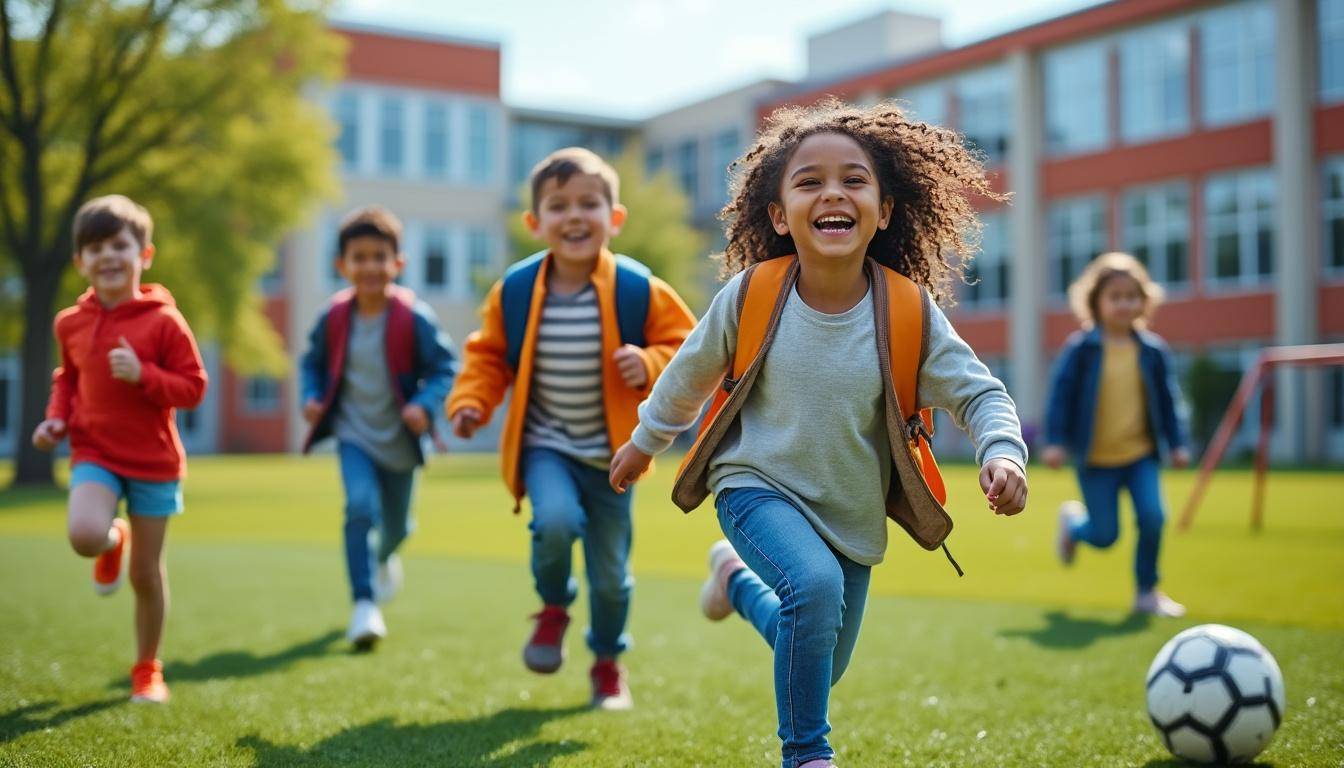In the evolving landscape of education, the role of play and recess has gained renewed attention as crucial components in nurturing children’s academic and social development. Recent discussions at the Playful Learning Summit highlight how unstructured play and recess not only boost physical health but also enhance cognitive functions and emotional well-being. As educators and parents strive to create environments conducive to holistic learning, incorporating purposeful play using resources like LEGO Education and Melissa & Doug has become increasingly essential. This article delves into how these playful moments interweave with learning, supported by expert insights and student experiences, to shape more effective educational practices.
How Unstructured Play and Recess Strengthen Learning Outcomes in Children
Unstructured play, especially during recess, offers children a unique opportunity to foster creativity, problem-solving, and social skills outside of a structured classroom environment. Sharon Peck from the Healthi Kids Coalition emphasized at the Playful Learning Summit the importance of movement and healthy risk-taking as critical for cognitive development. Such activities help children embrace learning challenges and improve communication skills through peer interaction.
- Development of executive function: Play promotes decision-making and self-regulation skills.
- Enhancement of creativity and curiosity: Tools like Imagination Playground and Green Toys stimulate imaginative scenarios encouraging exploration.
- Social-emotional learning: Children practice empathy and conflict resolution during interactive playtime.
- Physical well-being: Regular recess supports motor skills with equipment from Playworks and KOMPAN playgrounds.
- Reduced behavioral issues: Allowing time for free play decreases classroom disruptions and increases focus.
Despite these benefits, many schools still treat recess as a privilege rather than a necessity. According to a Rochester student panelist, Gina Vazquez Soto, recess often gets removed as punishment, limiting children’s access to vital playtime. Yet, city policies strictly prohibit withholding recess from any student, recognizing that physical activity is integral to learning and development.
Addressing Inequities in Access to Play Spaces Beyond School
Access to safe outdoor playspaces differs significantly based on geographic and socioeconomic factors. The Healthi Kids Coalition points out that only about 25% of urban families feel they have suitable neighborhood play areas compared to 65% of suburban families in Monroe County. This disparity means children in some communities have fewer opportunities for spontaneous play, increasing the importance of quality recess time at school.
- Urban neighborhood challenges: Limited parks and safe play zones outside school hours.
- Importance of inclusive playground equipment: Resources from Learning Resources and Fat Brain Toys emphasize sensory and developmental needs, accommodating all children.
- Community initiatives: Advocating for equitable playground design and safe play areas with programs integrating Green Toys and Discovery Toys.
- Collaboration with parents and educators: Strengthening support through education and awareness campaigns.
- Impact on academic motivation: Safe outdoor play correlates with improved engagement and enthusiasm in school.
This understanding urges schools and communities to innovate inclusive, accessible play environments that support every child’s growth.
Integrating Play-Based Learning Tools to Enhance Educational Experiences
Modern classrooms increasingly incorporate educational toys and kits that facilitate learning through play. Leading brands such as LEGO Education and Melissa & Doug provide structured yet flexible resources that complement traditional curricula and encourage active participation.
- LEGO Education: Promotes STEM learning via hands-on building challenges.
- Melissa & Doug: Encourages fine motor skills and imaginative scenarios.
- KOMPAN and Playworks: Design and maintain stimulating, safe playground environments.
- Imagination Playground: Uses large foam blocks to inspire teamwork and creative problem-solving among peers.
- Discovery Toys and Learning Resources: Target cognitive skills with interactive games and puzzles.
Incorporating these tools empowers students to explore concepts actively, making abstract ideas tangible. This approach aligns with studies linking play to enhanced critical thinking and communication abilities.
These innovations demonstrate how play complements rigorous academic programs, offering students balance and engagement.
Voices from the Classroom: Students and Educators on Play and Learning
Sixth grader Gina Vazquez Soto shared her perspective that play should not merely be an occasional reward but an integral part of daily learning. Her wish for the upcoming academic year is a guaranteed daily recess, irrespective of behavior, supporting the district’s wellness policy. Such sentiments reflect a growing recognition among young learners that play is essential for their well-being and academic success.
- Student voice: Advocating for consistent recess despite disciplinary actions.
- Teacher insights: Observing improved focus and reduced stress when play is prioritized.
- Policy adherence: Ensuring recess is never withheld as punishment.
- Parental involvement: Supporting children’s playtime needs and communication with schools.
- Community engagement: Encouraging shared responsibility in fostering joyful learning environments.
Embracing these voices encourages schools to reimagine recess not as downtime but as an active extension of learning that nurtures resilience, creativity, and connection.
Play and Language Development: Connecting Through Interaction and Exploration
Play significantly contributes to children’s acquisition of language and communication skills. Interactive toys and group activities stimulate verbal exchange and vocabulary expansion, enhancing overall literacy development. Educational materials on children’s language acquisition highlight that playful experiences support these critical milestones.
- Role-playing games: Encourage storytelling and expressive language.
- Interactive puzzles and toys: Promote discussion and instruction comprehension.
- Group playtime: Fosters conversational turn-taking and social cues understanding.
- Use of Learning Resources and Fat Brain Toys: Enrich vocabulary in engaging formats.
- Structured play scenarios: Develop pragmatic language and communication strategies.
By combining language learning with play, educators can create more dynamic and effective teaching environments, seamlessly integrating developmental goals and enjoyable experiences.
Building Lifelong Skills Through Play: Beyond Academics
Play extends its benefits far beyond academic knowledge. It cultivates emotional resilience, teamwork, problem-solving capability, and adaptability — all crucial for future success. Resources from companies like Green Toys and Discovery Toys offer durable, eco-friendly, and versatile play options that support sustainable educational practices.
- Emotional regulation: Handling wins, losses, and cooperation through play engages the prefrontal cortex.
- Conflict resolution: Negotiating roles and rules fosters mutual respect and leadership skills.
- Creative thinking: Inventing games and scenarios encourages flexible mindsets.
- Physical health: Promoting movement combats sedentary lifestyle tendencies.
- Environmental awareness: Eco-conscious toys raise appreciation for sustainability.
The integration of these elements within daily playtime nurtures balanced children prepared to navigate complex social and academic challenges.


